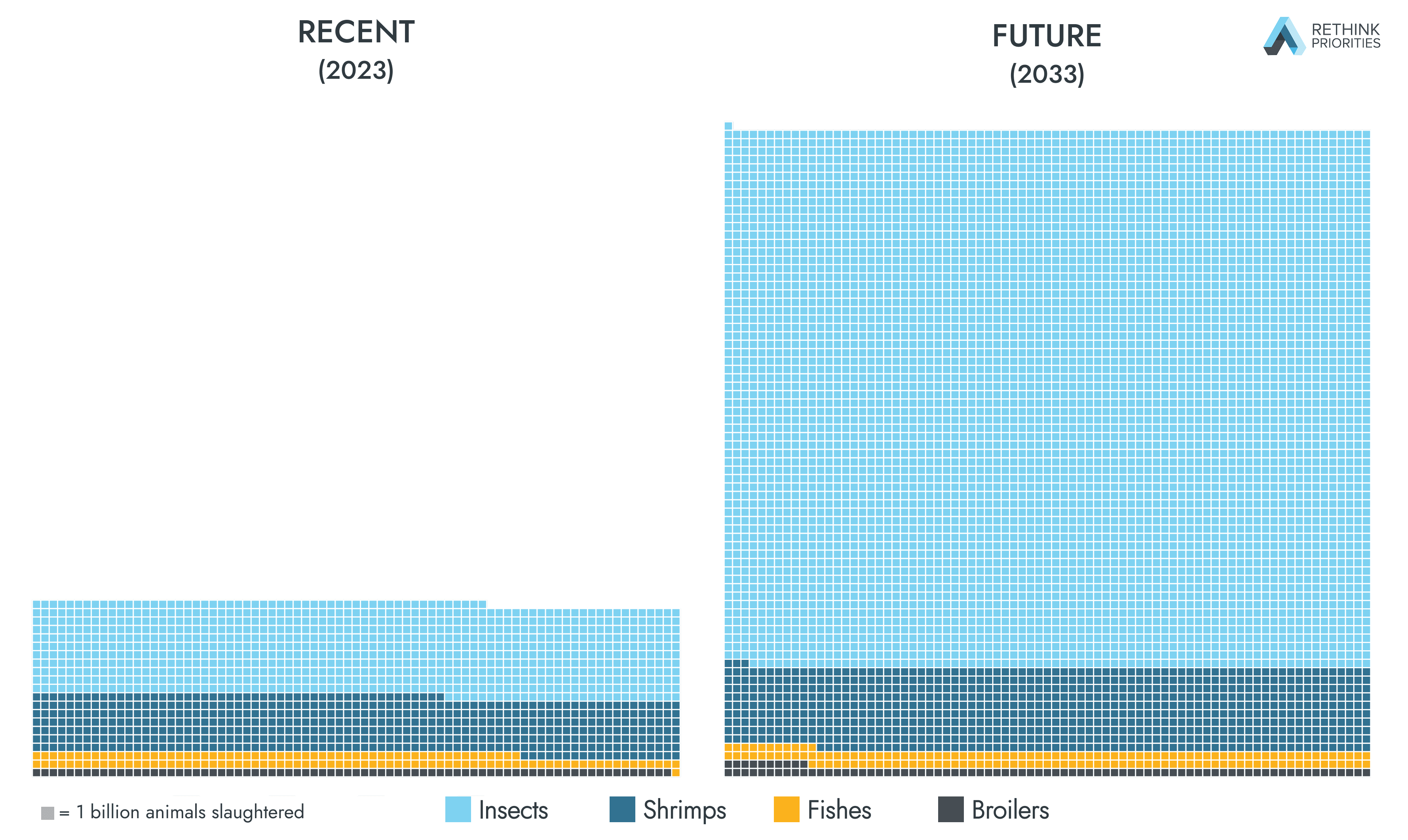How does Animal Welfare/Global Health affect AI Safety? Very brief considerations.
I think someone might build super strong AI in the next few years, and this could affect most of the value of the future. If true, I think it implies that the majority of any value from an intervention or cause area comes from how it affects whether AI goes well. Even if that's very slight and indirect. Relatedly, I think whether AI goes well depends on whether states will be able to coordinate.
How do Animal Welfare interventions affect whether AI goes well?
– I think the Moral Circle expansion is relevant.
– Helping reach climate targets seems relevant to help with international coordination.
– But I think that Animal Welfare interventions place a cost on society such as by raising the price of food and increasing pressure on our governments in high-income countries.
How do Global Health interventions affect whether AI goes well?
– I think that it reduces the pressure on governments in LMICs and gives them a safer society. This gives their Governments slightly more room to come to peaceful international agreements.
– But it may also enable more people to contribute to AI, whether that be AI capabilities development, chip manufacture (or AI safety/governance)
Overall, I slightly lean towards global health being better. Perhaps RP's tools shed light on this. (I haven't checked!)



How does Animal Welfare/Global Health affect AI Safety? Very brief considerations.
I think someone might build super strong AI in the next few years, and this could affect most of the value of the future. If true, I think it implies that the majority of any value from an intervention or cause area comes from how it affects whether AI goes well. Even if that's very slight and indirect. Relatedly, I think whether AI goes well depends on whether states will be able to coordinate.
How do Animal Welfare interventions affect whether AI goes well?
– I think the Moral Circle expansion is relevant.
– Helping reach climate targets seems relevant to help with international coordination.
– But I think that Animal Welfare interventions place a cost on society such as by raising the price of food and increasing pressure on our governments in high-income countries.
How do Global Health interventions affect whether AI goes well?
– I think that it reduces the pressure on governments in LMICs and gives them a safer society. This gives their Governments slightly more room to come to peaceful international agreements.
– But it may also enable more people to contribute to AI, whether that be AI capabilities development, chip manufacture (or AI safety/governance)
Overall, I slightly lean towards global health being better. Perhaps RP's tools shed light on this. (I haven't checked!)